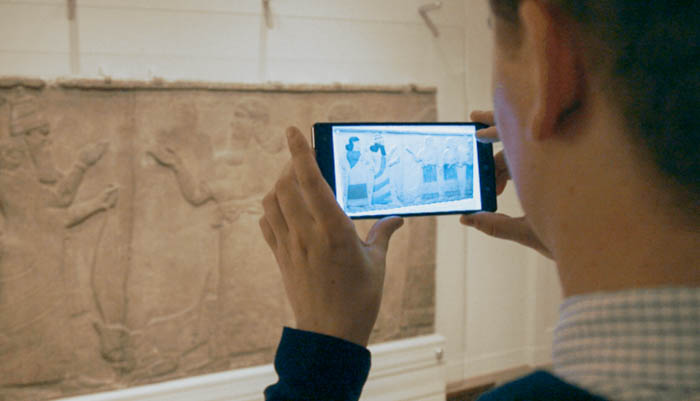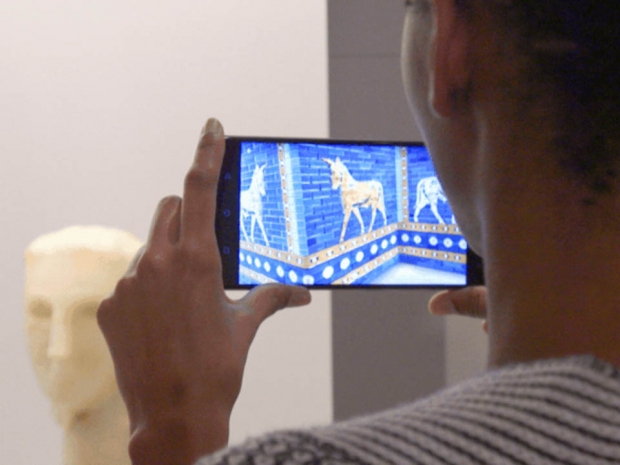
Source: Google Blog
Using Tango, the museum also hopes to show several limestone reliefs from Mesopotamia to create an augmented rendition of the original sculpted artwork prior to aging. The AR platform should also allow visitors to roll up several small cylinder seals that were once used to make clay impressions for jewelry and administrative signatures or stamps.
Google augmented reality platform is a bit different than other computer vision products on the market as it is chiefly designed to run on mobile devices to gather information about surrounding objects and the environment. The system determines a device’s position and orientation through three methods – motion tracking (using the accelerometer and gyroscope), area learning with metadata, and depth perception for detecting object distances and properties. These three data points generate the “six degrees of freedom” the company then uses to produce detailed 3D information about the environment.
While the platform has mostly been used for commercial auto sales and by NASA for developing autonomous robots, it has recently been released into the consumer sphere starting with the Lenovo Phab 2 Pro in August 2016. The next device to receive integration for Tango AR (and Daydream VR) will be the ASUS Zenfone AR, which was announced at CES 2017. The device will use a three-sensor system consisting of a 23-megapixel camera lens, a secondary motion tracking lens, and a tertiary lens for distance tracking of surrounding objects.
At the Detroit Institute of Arts, users will be able to borrow a Lenovo Phab 2 Pro from the front desk to harness the full capabilities of what was once known as Project Tango. Google hopes to launch similar initiatives with other museums in the near future but has yet to announce any specific plans.




